Italy finally reached its goal of fully vaccinating 80% of its population on October 9th – nine days after its initial target of the end of September.
85% of the population has now been inoculated with at least one dose, and prime minister Mario Draghi has announced a new target of 90% coverage by the end of October.
READ ALSO: Italy reports rise in Covid vaccine uptake ahead of green pass expansion
But what variations exist between regions?
There are some slight differences to be aware of in how different sets of statistics calculate the population sample.
The European Medicines Agency has yet to approve any Covid-19 vaccine for under-12s, excluding that demographic from eligibility for the time being.
The Italian government also only takes into consideration the eligible population of over-12s when updating its Covid vaccination counter (at 80.8% as of Friday afternoon).
For this reason the newspaper Il Sole 24 Ore’s Lab24 site, which provides Covid updates using data from Italy’s Covid-19 emergency commissioner’s office, takes into account only a given region’s population over the age of 12 when publishing vaccine statistics.
By contrast, the Gimbe Foundation, an independent evidence-based research institute that also takes its Covid data from Italy’s special emergency commissioner, calculates the percentage of a given region’s total population including all those aged 12 and under who are fully vaccinated, giving slightly lower percentages.
Which parts of Italy have the lowest vaccination rates?
Regardless of these differences, both Lab24’s latest statistics and the most recent Gimbe Foundation report of October 14th show that Sicily and Calabria in the south and Valle d’Aosta and the autonomous province of Bolzano in the north rank in Italy’s bottom four regions for vaccine uptake.
Some 68.7% of the total population of Valle d’Aosta is fully vaccinated, while that figure stands at 67.1% for Calabria, 66.7% for Sicily, and just 63.9% for Bolzano, according to Gimbe’s data.
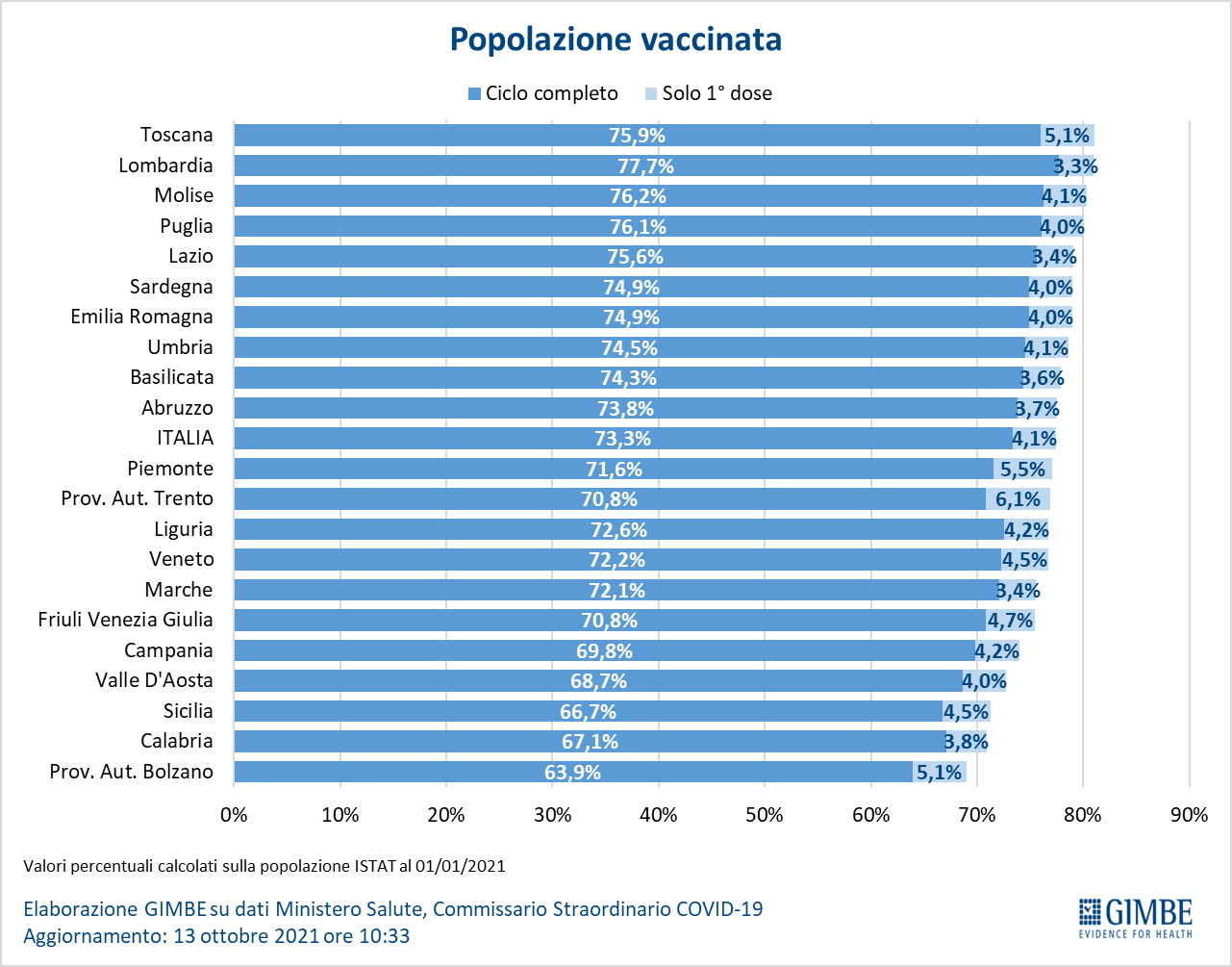
Meanwhile Lab24 shows full vaccination rates of 77.4% in Valle d’Aosta, 73.9% in Bolzano, 74.9% in Calabria, and 73.2% in Sicily among the eligible population over 12.
Which areas have the highest rate of vaccination coverage?
Despite some variations in the rankings, both sets of data have Tuscany, Lombardy, Puglia, and Lazio among the top five regions for vaccination coverage.
Lombardy tops the Gimbe Foundation’s chart with full vaccine coverage of 77.7% of its total population, with Molise (76.2%), Puglia (76.1%), Tuscany (75.9%), and Lazio (75.6%) coming in close behind.
Lab24 has Lazio racing ahead with 84.3% of its eligible population over 12 fully vaccinated, with Lombardy (84.1%), Puglia (84%), Emilia Romagna (83.6%), and Tuscany (83.5%) following close behind.
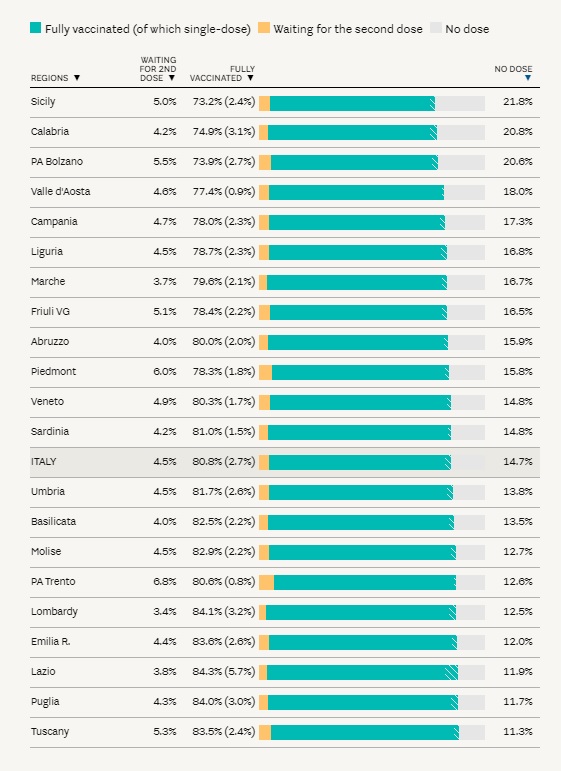
Starker differences emerge when you start to look at specific demographics.
Gimbe’s latest data of October 13th shows that among over-50s, 14.7% of the population in Calabria, 14,1% in Bolzano, 13.9% in Sicily, and 13.4% in Friuli Venezia Giulia have yet to receive a single dose of the vaccine.
That figure drops to just 5.3% when it comes to Puglia’s population over 50, followed by Molise at 5.9%, Lombardy at 6.7%, Lazio at 6.9%, and Tuscany at 7.1%.
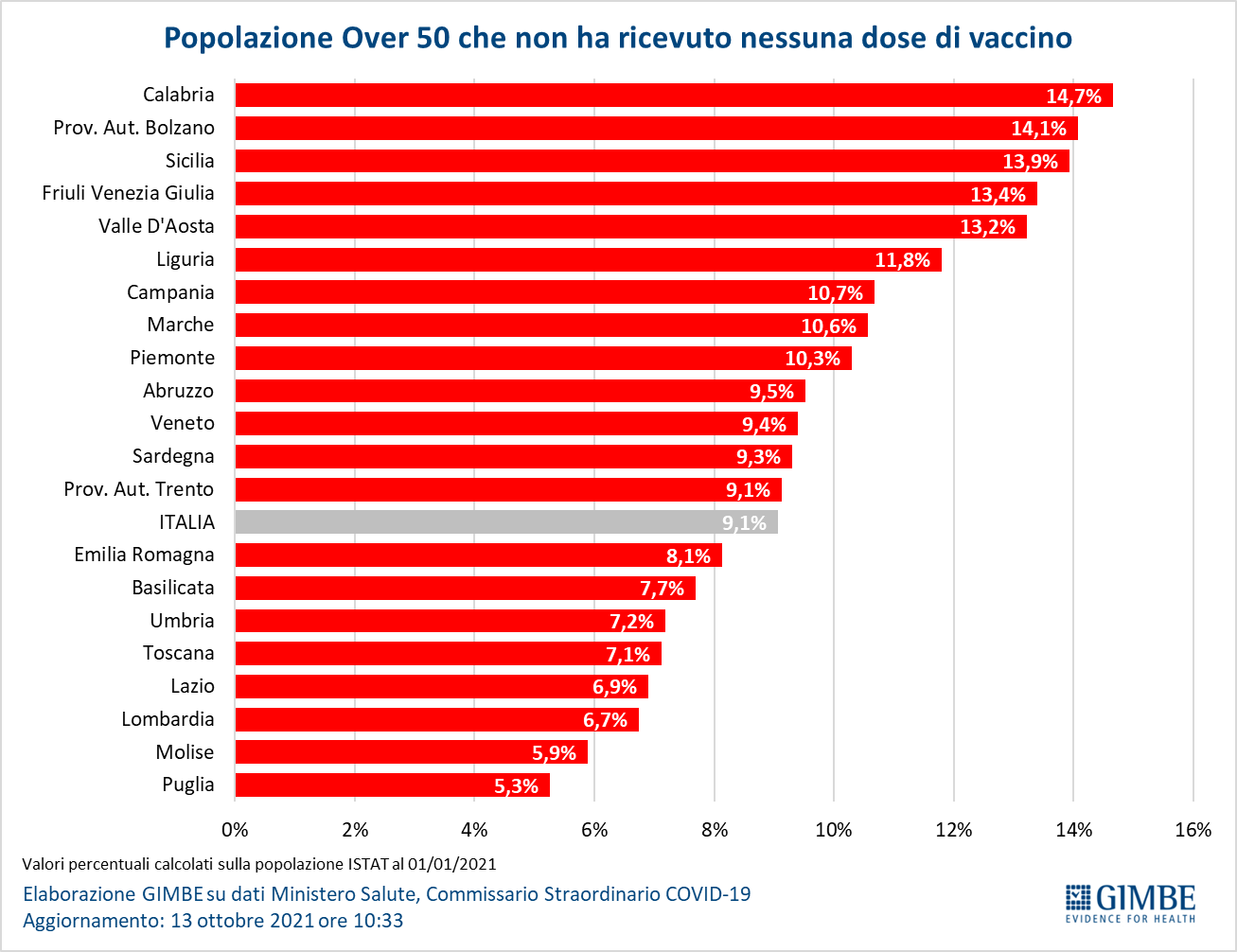
As for third doses (for which only a small proportion of the population are eligible), these show by far the greatest regional variation.
Italy began administering third doses of the Covid-19 vaccine towards the end of September, starting with the most at-risk members of the population on September 20th, and adding health and and social care workers and the over-80s one week later.
EXPLAINED: Who can access a third dose of the Covid vaccine in Italy?
The health ministry extended the offer to all over-60s from October 8th, although everyone apart from the immunosuppressed must wait at least six months from their last vaccine before receiving the booster.
As many as 18.3% of Molise’s eligible population had received a third dose of the vaccine as of October 13th, according to Gimbe’s data.
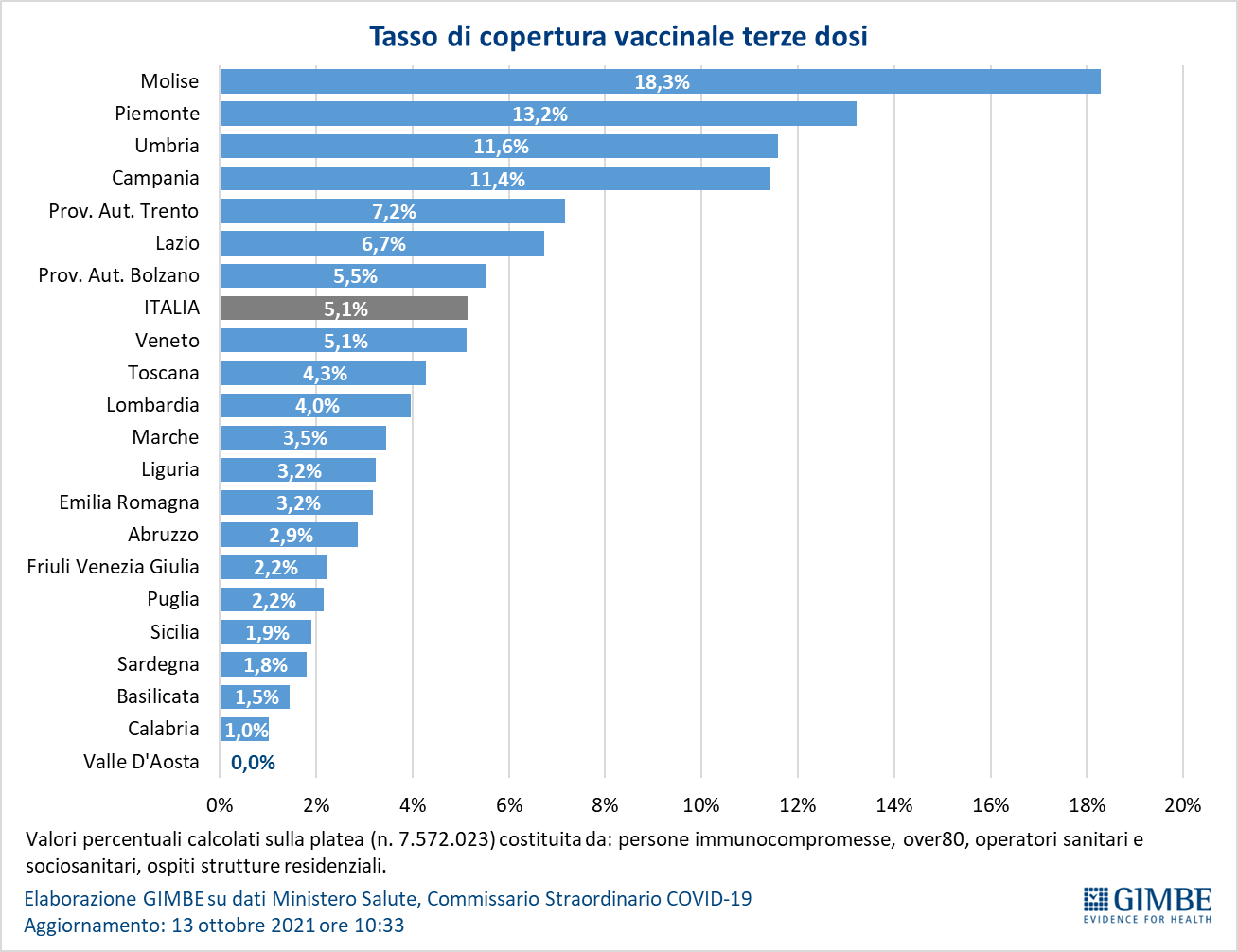
Piedmont follows behind with a comparatively modest 13.2%, Umbria at 11.6%, Campania at 11.4%, and the autonomous province of Trento at 7.2%.
Zero third doses had been administered in Valle d’Aosta by the same date, with only 1% of people who are eligible in Calabria, 1.5% of those in Basilicata, 1.8% in Sardinia, and 1.9% in Sicily having received the booster.
While Italy’s vaccination campaign continues to gradually progress, the rate of new vaccines administered has dropped off in recent weeks, and the country lags behind France, which has now inoculated 90% of its population.
In an effort to boost coverage and keep infection rates down, the Italian government introduced a new rule on Friday requiring all workers to show a Covid-19 health certificate or ‘green pass’ to access any workplace.
READ ALSO: How Italy is enforcing the new workplace green pass rules from Friday
Muted protests were seen across the peninsula as the law came into force on Friday, but no significant disruptions or violence were reported by Italian media.
A protest held in Rome the previous weekend attracted 10,000 people and descended into violence after members of a neo-fascist group ransacked buildings and clashed with the police, leaving 38 officers injured.

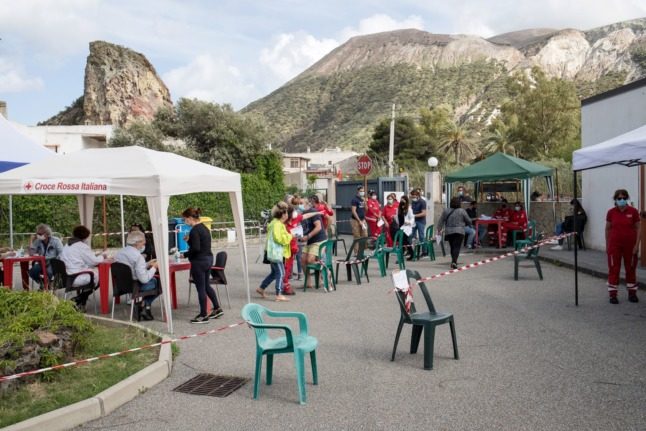


 Please whitelist us to continue reading.
Please whitelist us to continue reading.
Member comments